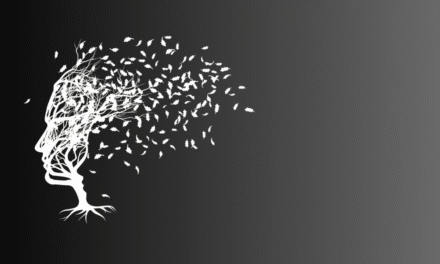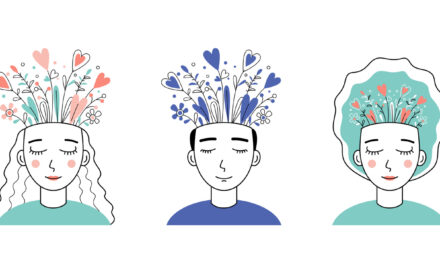COLAP Wellbeing Corner
Staying Grounded in the Storm: Four Skills for Working with Challenging Emotions
by Ben Gaibel, LCSW
A tight chest and butterflies in the stomach as your inbox fills with urgent messages. A pounding heart before a tense negotiation. Tense shoulders from non-stop rushing, battling deadlines and fighting traffic. Restless energy that lingers at the end of the day from the emotional residue of high-stakes work.
For legal professionals in every practice area, whether you’re preparing for trial, counseling clients, managing a heavy caseload, or dealing with unresolved tension at home, these sensations are all too common. These uncomfortable feelings are normal responses to stress and are not automatically signs of dysfunction. They are manageable feelings, and learning to tune into them can be a crucial step toward navigating them with greater skill.
Emotional discomfort can often feel like an unwelcome threat—or even like a weakness or flaw. It’s natural to want to push away, suppress, or power through difficult feelings. But what if we learned to pay attention to these signals and accept them as part of our experience? When we notice how emotions show up in our bodies, instead of fighting those sensations, we create the opportunity to respond with more skill and care. Research suggests that improving our ability to notice physical sensations (known as interoceptive awareness) can significantly enhance emotional regulation and resilience.[1]
Below, we’ll explore four practical skills for working with challenging emotions, illustrated through a scenario that may sound familiar.
The Scenario: A Lawyer Under Pressure
This scenario is purely fictional and for the purpose of illustrating use of the techniques described. Any similarity to any person or situation is merely coincidental.
“Sam” is an attorney juggling deadlines, demanding clients, and unresolved tension at home. One busy afternoon, his inbox pings as he receives a highly stressful email. Instantly, Sam feels his face flush. His heart races and his mind leaps to worst-case scenarios. Instead of automatically reacting by firing off a defensive reply, catastrophizing, or drowning in his emotions, Sam could try something different. He pauses, checks in with his body, and applies the following four skills.
Skill 1: Moving Toward Emotion Without Resistance
Natural reactions to challenging emotions often include resisting them by quickly reacting without thinking things through, having irrational thoughts, or unconsciously trying to distract oneself to avoid the feeling. Common avoidance behaviors include excessive screen time, overworking, obsessive thinking, blaming others, or attacking ourselves. These patterns can be used as feedback that we’re trying to avoid a challenging feeling. Instead, we can use these moments as an opportunity to acknowledge and accept what’s actually arising and meet it with curiosity.
Rather than firing off a hasty email or spiraling into negative thinking, Sam pauses and asks himself, “What am I feeling right now that I don’t want to feel?” He acknowledges feeling anxious, overwhelmed, and frustrated. Instead of struggling against the discomfort, he gives himself permission to feel what is arising. By opening to his internal experience and exploring it with interest, the struggle lessens. Curiosity helps him step back and observe the emotion rather than be swept away by it.
Skill 2: Tuning In to Body Sensations
Emotions often show up as physical sensations: a heavy heart when sad, a tight stomach when anxious, or a clenched jaw when angry, just to name a few. Research has shown that different emotions produce distinct patterns of sensations in the body, highlighting the importance of paying attention to our physical experience as a window into our emotional state.[2] While our minds can spin tales and create inaccurate narratives, the body offers a more immediate and objective truth about how we are feeling. By turning attention to physical sensations, we build tolerance and confidence to be with whatever arises.
Sam notices his thoughts are racing and influenced by intense feelings. The uncomfortable sensations in his body remind him that he’s in a heightened emotional state. He asks, “Where do I feel this in my body?” He notices his face is flushed, his chest and stomach feel tight, and his jaw is clenched. As he observes these sensations, he realizes they ebb and flow in intensity, and that there is no evidence of harm in the actual feelings. This realization helps him feel safer in the moment.
Skill 3: Meeting the Experience with Acceptance
At first, Sam catches himself resisting the difficult feelings. Then he remembers to allow himself to feel whatever he is experiencing, without self-judgment. He practices responding to his feelings with acceptance and self-compassion. It’s the difference between thinking, “I shouldn’t feel this way,” and acknowledging, “It’s understandable that I feel this way. This is really hard.”
Imagine responding to yourself as you would to a good friend, such as offering understanding and support, not judgment. Acceptance does not mean liking the feeling or giving up. It means making space for it to exist without adding more struggle.
Skill 4: Grounding Through the Senses
Sometimes opening to difficult emotions can be overwhelming and we lose our grounding. When this happens, we can expand our awareness beyond the emotion to include sights, sounds, or other physical sensations in the present moment such as the feeling of the body making contact with the chair. Focusing on something neutral or pleasant can help bring stability.[3]
Sam notices his thoughts starting to spiral and feels too overwhelmed to practice the other skills. To ground himself, he steps away from his computer and goes for a short walk. He feels the sensation of his feet contacting the ground, listens to the sounds of traffic in the distance and the wind, and takes in the view of the trees nearby. By expanding his awareness to his senses, he calms his nervous system and regains his stability. The difficult feelings are still present, but his awareness is no longer completely contracted around the negative. After a few deep breaths, Sam is ready to return to work and respond to the triggering email with a clearer mind.
Conclusion
By turning toward our feelings, tuning into our bodies, responding with acceptance, and grounding through the senses, we can face difficult moments with greater ease and recover more quickly. In Sam’s case, these skills helped him respond to his work life challenges more skillfully, rather than being derailed by his emotions. With practice, these skills can help us navigate the emotional storms of personal and professional life with more confidence, clarity, and resilience.
For more information about stress management and well-being related strategies, please reach out to the Colorado Lawyer Assistance Program (COLAP) at info@coloradolap.org or (303) 986-3345 for a consultation and/or tailored referrals.
ENDNOTES
[1] Lazzarelli, S., Palomba, D., & Cecchetto, C. (2024). Interoceptive Ability and Emotion Regulation in Mind–Body Interventions: An Integrative Review. Behavioral Sciences, 14(11), 1107. https://www.mdpi.com/2076-328X/14/11/1107
[2] Nummenmaa, L., Glerean, E., Hari, R., & Hietanen, J. K. (2014). Bodily maps of emotions. Proceedings of the National Academy of Sciences, 111(2), 646–651. https://doi.org/10.1073/pnas.1321664111
[3] Levine, P.A. (2010) In an Unspoken Voice: How the Body Releases Trauma and Restores Goodness. North Atlantic Books.
Maggie Kapitan, LMFT, Clinical Coordinator and Publications Liaison for the Colorado Lawyer Assistance Program, is the coordinating editor of this wellness series. Contact COLAP for free and confidential assistance at 303-986-3345 and info@coloradolap.org.
ABOUT THE AUTHOR
Ben Gaibel is a Clinical Coordinator for the Colorado Lawyer Assistance Program (COLAP). He is a licensed clinical social worker (LCSW) with nearly 20 years of experience in behavioral health, including extensive work in oncology social work. Ben has been teaching Mindfulness-Based Stress Reduction (MBSR) since 2001 and has specialized expertise in stress reduction, resilience, and wellness education, with a focus on helping professionals manage work-related stress, secondary trauma, and burnout.





